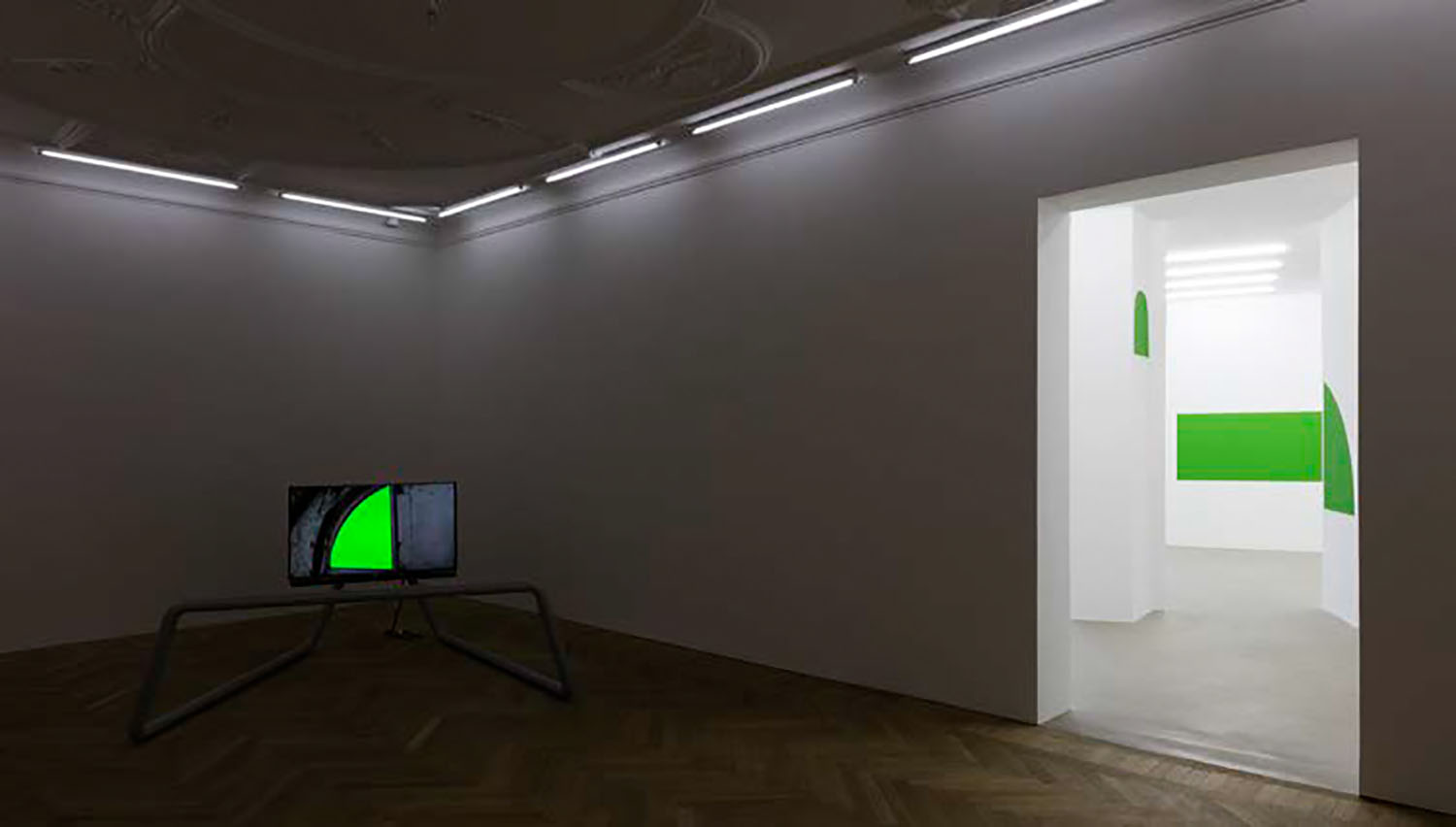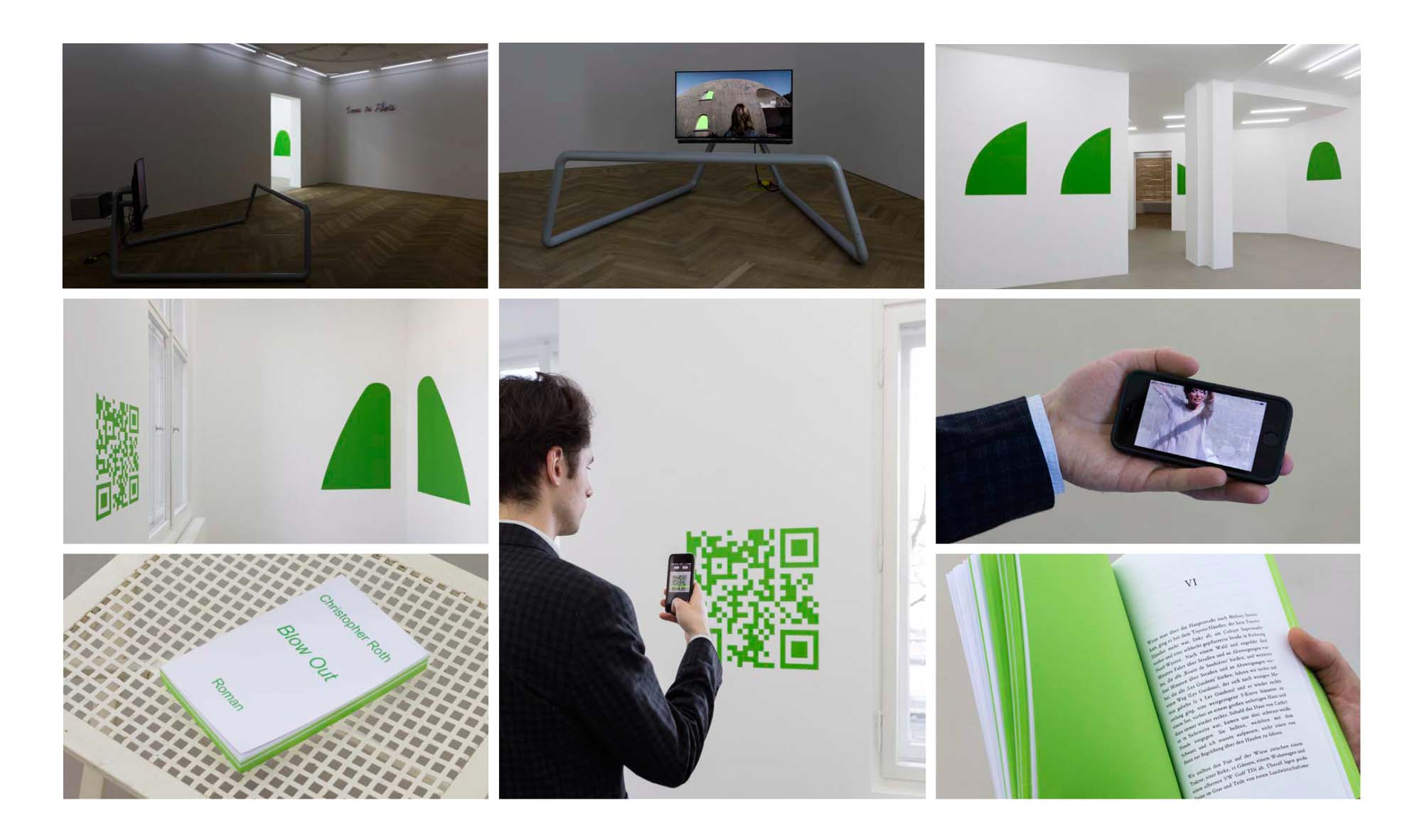From January 22 through February 27, 2016, Esther Schipper presented the second solo exhibition with the gallery. Entitled Blow Out, the exhibition included a new film with a specially conceived viewing device, a series of wall paintings, a sculptural intervention, a neon work and a new, unfinished novel.
Blow Out constitutes a densely woven web of associations with a cast of characters that includes actresses, architects, film directors, philosophers, and La Cupola, a decaying building on the Sardinian coast in a constant temporal displacement.
Cornerstone is the film Blow Out, largely shot in the so-called Bini-Shell (after its architect Dante Bini), completed in 1972 for the Italian modernist film director Michelangelo Antonioni who intended to inhabit it with his lover, the actress Monica Vitti. (Bini’s innovation allowed the construction of concrete shells hardened around an inflated balloon later removed.) Surtitles have a hypnotic quality but also give the film a loose narrative structure, beginning with its initial direct salutation: “Dear Antonioni…”, here doubling as a reference to Roland Barthes’ 1980 text on the director’s work. Now in a state of disrepair, the building’s history—built for a couple that split up before its completion—is evoked as three women appear to visit the site, vanish and reappear. Despite their apparent age difference, there is a distinct likeness between the three female figures, encouraging a temporal slippage: Vitti is shown in an interview from the 1960s, while a woman of similar age looks out from the now- dilapidated building‘s terrace and wanders through the interior, with its central, erotically charged staircase conceived by Antonioni as a kind of display for his beautiful lover. Adding further temporal layers, the third woman, Vera Lehndorff, appears in three guises: as young actress who, known under her stage name Veruschka, starred in brief but iconic scenes in Antonioni’s 1966 Blow Up, as herself circa 2015, and as miniaturized 3-D scan wearing the costume from the Antonioni film.Her sole spoken line from Blow Up—“I am in Paris”—recurs mantra-like throughout the film and as a new neon work. Another presence will occur online: Lehndorff and Roth’s 2015 film annA+3 starring Lehndorff in the four main roles will be shown on the website where-is-anna.xyz during the exhibition.
Based on the openings in Dante Bini’s structure, bright green-screen wall paintings further extend the film’s temporal and conceptual conflation into the exhibition space.
Roth’s novel Blow Out explores Quentin Meillassoux’s concept of extro-science fiction (or XSF), a science fiction that imagines an existence in which not all occurrences can be explained by empirically derived, reproducible scientific rules. Partially inspired by René Barjavel’s 1943 Ravage, it depicts a future that tries to adapt to the consequences of the sudden and inexplicable loss of electricity.
While earlier projects, notably 80*81, with Georg Diez, sought to reconstruct events in the past as evidence of paradigmatic cultural and historical shifts, like his recent feature-length film Hyperstition (in collaboration with Armen Avanessian) the new body of work can be located in the dynamic between Meillassoux’s theory of a world that exists outside of it’s understanding by humanity and J.G. Ballard’s dictum from 1971 that “The future is a better key to the present than the past.“
Images by Andrea Rossetti

